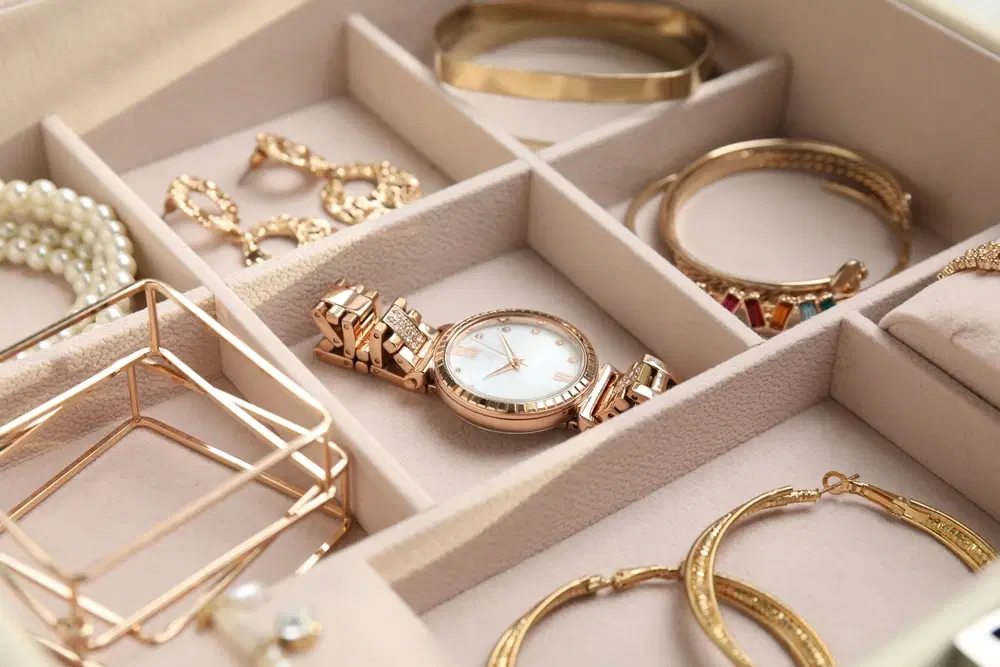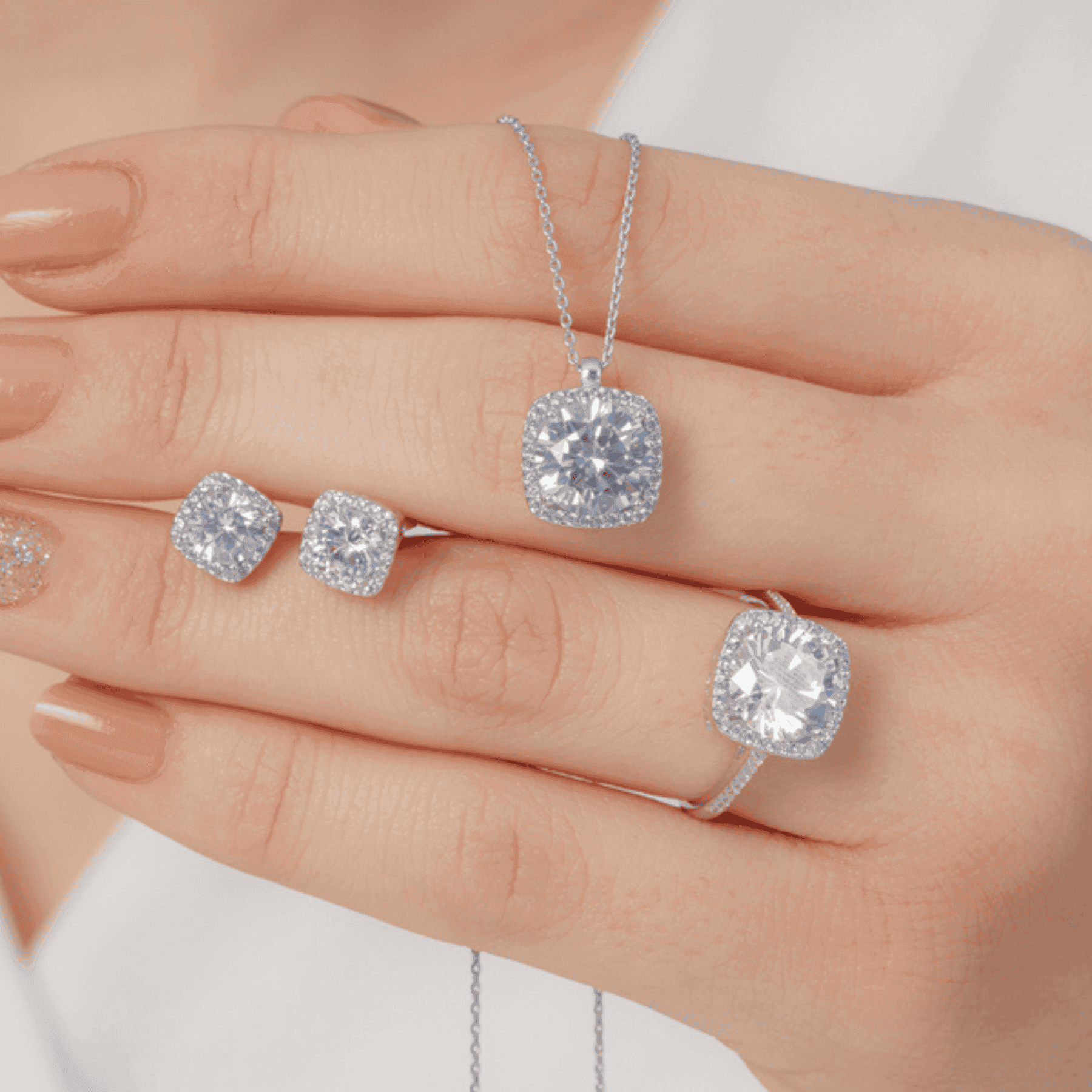
Watches & Jewellery
•05 min read

Choosing the right precious metals for watches and jewelry is not merely about style, but also about durability, value, and personal expression. In this guide, we explore how to choose metals for luxury timepieces and fine jewelry. Learn how to select materials for your gold watches, silver jewelry, and platinum rings to ensure both beauty and longevity in your accessories.
Precious metals are rare, naturally occurring elements known for their beauty and value. They include gold, silver, platinum, and even palladium. These metals are cherished in the world of accessories because they hold their shine over time and add a unique charm to luxury timepieces and fine jewelry. Their inherent versatility also allows them to be shaped into beautiful forms that reflect personal style. Whether you prefer a classic gold watch or stylish silver jewelry, each metal offers its own unique allure.
The allure of precious metals comes from several key attributes. Their rarity increases their desirability, and their durability ensures lasting value. Here are some important characteristics:
Rarity: Limited availability drives up their value and makes them exclusive.
Durability: They resist tarnishing and corrosion, which is ideal for everyday wear.
Aesthetic Appeal: Their natural luster and the ability to achieve a high polish enhance their visual charm.
Versatility: These metals can be crafted into intricate designs, making them perfect for custom jewelry designs and luxury timepieces alike.
Gold is synonymous with luxury and is a top choice when it comes to high-end jewelry and luxury timepieces. Gold watches and finely crafted jewelry are available in many forms, like yellow, white, and rose gold, each offering a unique look. Gold is hypoallergenic and resists tarnish, making it an enduring option. However, because pure gold is soft, it may be alloyed with other metals to improve durability.
Silver jewelry, especially sterling silver, presents a sophisticated yet accessible option. Its cool shine and subtle elegance make it perfect for everyday wear. Silver pieces add a touch of style without compromising on quality. While silver is incredibly versatile, it does require periodic polishing to maintain its brilliance, making it a practical choice for those mindful of care routines.
Platinum rings and metal bracelets are highly sought after for their rarity and robustness. This metal is denser and more durable than gold or silver, making it ideal for diamond-studded watches and other high-end jewelry. Its hypoallergenic properties add to its appeal, especially for those with sensitive skin. The higher price point of platinum is balanced by its long-lasting beauty and strength.
Palladium has grown in popularity, especially for custom jewelry designs. Its lightweight and affordable nature makes it a desirable option for modern style accessories. Additionally, rare metals like rhodium and iridium are often used for plating to enhance the wear resistance of precious metal accessories, combining aesthetics with durability.

Before selecting a metal, consider where and how you plan to use your accessory. If you need jewelry or a watch for everyday wear, choose a metal that can handle frequent use. For special occasions, you might opt for pieces that emphasize aesthetic appeal over rugged durability. Whether it is a luxury timepiece or a statement metal bracelet, your choice should align with your lifestyle.
Your budget plays a crucial role in determining the right metal. Gold and platinum are excellent for luxurious designs but come at a higher cost. Silver offers a budget-friendly alternative without sacrificing style. When considering custom jewelry designs, be prepared for additional investment for tailored craftsmanship and unique elements.
For individuals prone to skin sensitivity, choosing hypoallergenic metals is essential. Metals such as platinum and higher karat gold are less likely to cause irritation. It is wise to avoid metals that include nickel alloys, which may lead to discomfort. This careful selection ensures that your accessory not only looks good but feels comfortable too.
Your personal style and wardrobe should guide your choice. Gold offers warm, inviting hues while silver provides a cooler elegance. Platinum, with its understated luxury, is perfect for those seeking a refined and sophisticated look. Consider the overall vibe you wish to create, and choose a metal that naturally complements your aesthetic decisions.
Diamond-studded watches and metal bracelets are among the most admired pieces in luxury accessories. The brilliance of diamonds is beautifully enhanced when set in precious metals like platinum or white gold. These combinations not only elevate the accessory but also make an enduring statement of sophisticated style and elegance.
Modern consumers are increasingly aware of sustainability. Many fashion-forward brands now offer options like recycled gold or responsibly sourced silver, giving you ethical precious metal accessories that not only look amazing but also reflect a commitment to responsible fashion. This trend is a nod to the growing importance of environmental consciousness in curating your collection.
Custom jewelry designs allow you to imbue your personality into every piece. By choosing metals that best reflect your style, you gain the freedom to experiment with mixed metals or personalized engravings. This tailored approach helps you create high-end jewelry that truly speaks to your identity and taste.
Insight Corner: "Did You Know? The Rarity of Platinum"
Platinum is 30 times rarer than gold. Its rarity, combined with its density and durability, makes it an exclusive choice for luxury watches and jewelry. Even with daily wear, platinum maintains its shape and stunning shine, ensuring your accessory remains timeless.

Proper care can prolong the life and shine of your precious metal accessories. Use a soft cloth and a small amount of mild soap to gently clean your gold watches and silver jewelry. Platinum requires special care; professional polishing is often recommended to maintain its innate luster and brilliance.
When not in use, store each piece of jewelry or watch separately in soft pouches or cloth-lined boxes. This practice prevents scratches and minimizes exposure to chemicals and moisture. Proper storage ensures that your curated collections remain pristine and retain their value over time.
It is important to inspect your accessories periodically, especially those with intricate designs or stone settings. Look for signs of wear or loose elements, particularly in diamond-studded watches or delicate metal bracelets. A regular checkup combined with professional maintenance can help preserve your investments for years to come.
Gold, silver, platinum, and palladium are the primary precious metals used in watches and jewelry.
The top choices often include gold, silver, platinum, palladium, and rhodium because of their rarity and durable properties.
Depending on the context, the list may include gold, silver, platinum, palladium, rhodium, ruthenium, iridium, osmium, copper, titanium, and occasionally others used for specific design accents.
Among the most expensive metals are rhodium, platinum, gold, palladium, iridium, osmium, rhenium, ruthenium, silver, and tantalum.
Choosing the right precious metals for watches and jewelry is all about balancing style, durability, and personal preference. By considering factors such as usage, budget, and skin sensitivity, you can make an informed decision. Whether you opt for the warmth of gold watches, the cool elegance of silver jewelry, or the unmatched durability of platinum rings, your chosen pieces can express your individuality and refined taste. Enjoy the journey of curating accessories that not only elevate your look but also stand the test of time.